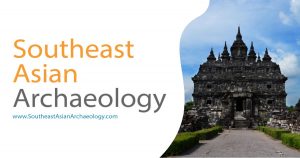Previously on The Many Places of Singapura… we saw the first of the Lion Cities in Vietnam and then we talked about two possible locations for other Singapuras in the kingdoms of Chi Tu and Pajajaran in the Malay Peninsula and Java respectively. In this final installment of The Many Places of Singapura, we’ll explore the origins of reigning Lion City – Singapore, where we’ll find fiction passing off as truth, and where truth is stranger than fiction!
Singapore, of course wasn’t always known as “Singapura” – it once bore the name of Temasek, a name which in Old Malay means “city of the sea”. In 14th century Chinese accounts, Wang Dayuan, a trader who traveled through Southeast Asia mentioned Temasek (Dan-Ma-Xi). There, he noted a settlement where the natives and Chinese lived side-by-side. He also noted that the Dan-ma-xi barbarians were pirates, often letting ships passing to the west unmolested, but plundering returning ships when they reached Karimun island. (Aside: I previously wrote about a Srivijayan inscription on Karimun). So it’s quite amusing that the latest Pirates of the Carribean movie features Chow Yun-fat as the pirate king of Singapore. A case of life imitating art imitating life? Perhaps it would be more accurate to have him say:

So how did Temasek get its named changed then? We have one account from the Sejarah Melayu, or Malay Annals. Sang Nila Utama, later entitled Sri Tri Buana (both titular names, and referring to a prince from Palembang) had just crossed the sea from Bentan (Bintan) to the white sandy shores of Temasek:
And when they reached the shore, the ship was brought close on and Sri Tri Buana went ashore with all the the ship’s company and they amused themselves with collecting shell-fish. The king then went inland for sport on the open ground at Kuala Temasek.
And they beheld a strange animal. It seemed to move with great speed; it had a red body and a black head; its breast was white, it was strong and active in build, and in size was rather bigger than a he-goat. When it saw the party, it moved away and then disappeared. And Sri Tri Buana inquired of all those who were with him, “What beast is that?” But no one knew. Then said Demang Lebar Daun, “Your Highness, I have heard in ancient times it was a lion that had that appearance. I think that what we saw must have been a lion.”
…
Sri Tri Buana then established a city at Temasek, giving it the name of Singapura.
(Shellabear edition of the Sejarah Melayu)
Contrary to popular belief, Singapura was not named after a lion (which indeed would have been a very lost lion), but in fact an unidentified “strange creature” that was thought to be a lion! The source of this account – the Malay Annals – must also be seen as a product of its times. The annals were first compiled in the 16th or 17th century, when the Malacca Sultanate had moved to Johor after being ousted by the Portuguese. The Malay Annals does little to explain to its audience – who would have heard the history rather than read it – why a Malay Islamic sultanate’s precursor would have an Indic name. The early part of the annals, which includes the founding of Singapura, are thought to be romanticised, mythologised accounts of a more shady past.
Other historical sources provide supplementary and contradictory information: according to the Alfonso D’Alberquerque, the Portuguese general who conquered Melaka, a Palembang prince named Paramesvara (Parameswara) fled to Singapura and usurped rule. When the king of Patani (in the Thai peninsula), who was brother of the former ruler, came to seek revenge, Paramwswara fled north to found Melaka. In the Malay Annals, Parameswara was fifth in the line of rulers of Singapura, who was attacked by the Javanese Majapahit and was forced to flee to Melaka, which he founded.
Whatever the case may be, as we may well never truly know, the name Singapura lived on through the Malay Annals. This name and location was later picked up on by Sir Stamford Raffles in the 19th century who sought to build a settlement in Singapore, but also as a symbolic move to legitimise a British foothold in the region. From the lack of textual references from both the Chinese and Srivijaya, it certainly appears that Temasek/Singapura was not geographically significant until around the 14th century, and its current importance is due largely to the British rather than any former glory. However, the different accounts collectively imply that a settlement existed before Parameswara, and typical of other populated areas of the region would have adhered to a syncretic Hindu-Buddhist religion. John Crawfurd, the first British resident of Singapore noted in his diaries the remains of an ancient settlement on Fort Canning Hill, which he attributes as remains of a Buddhist temple and monasteries. It is in this setting, then, that the name Singapura is not entirely out of place.
And that wraps up this series on The Many Places of Singapura! I hope you found this series interesting, as much as I had found it interesting to write about it.
The books I referred to for this article were:
Early Kingdoms of the Indonesian Archipelago and the Malay Peninsula by P. M. Munoz
Archaeological Research on the “Forbidden Hill” of Singapore: Excavations at Fort Canning, 1984
The Malay Annals (I used Shellabear’s version)

























Hahaha, I like the pic where Chow Yun Fat is saying “Welcome to Temasek lah!”, it really cracks me up!
Great article!